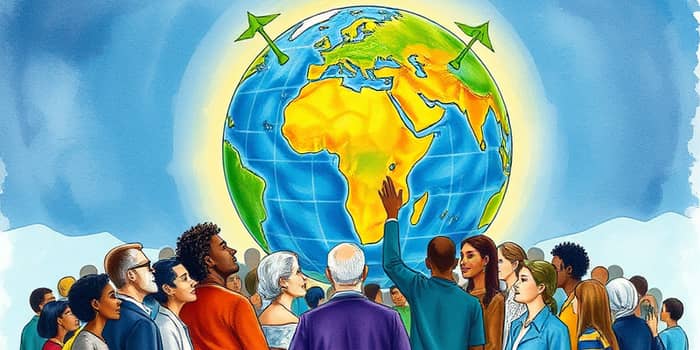Adopted by 195 nations at COP21 in December 2015, the Paris Agreement stands as a landmark legally binding international treaty that unites countries in the quest to curb climate change. It took effect in November 2016, after decades of negotiation under the UNFCCC framework.
Historical Background
The journey to Paris began in 1992 with the Rio Earth Summit, which established the United Nations Framework Convention on Climate Change (UNFCCC). Nations committed to slowing global warming but struggled to define fair responsibilities.
Over the next two decades, debates over equity, economic growth, and environmental protection intensified. The Kyoto Protocol set targets for developed countries but excluded major emerging economies, fueling tensions in international talks. At COP21, diplomats reached consensus on a common framework to address global warming, binding nearly every country to a shared ambition and marking a new chapter in collective climate governance.
Core Goals and Ambitions
At its heart, the agreement sets temperature objectives that challenge the world to transform:
- Keeping temperature rise well below 2°C above pre-industrial levels
- Driving efforts to limit the increase to 1.5°C
These targets recognize that holding the rise in global average temperature to such levels demands action across sectors, from energy and transport to land use and infrastructure. Signatories commit to rapid, far-reaching transitions in energy, industry, and land management to meet these goals.
Mechanisms and Implementation
Rather than imposing top-down mandates, the Paris framework relies on a pledge and review system that encourages national ownership and gradual escalation of ambition.
- Nationally Determined Contributions (NDCs): Voluntary pledges outlining emission reduction targets, typically updated every five years.
- Global Stocktake: A collective assessment of progress that began in 2023 to guide future NDC enhancements.
- Support Provisions: Financial, technological, and capacity-building assistance, especially for developing nations, alongside flexibility measures like carbon trading under Article 6.
To ensure transparency, all parties report regularly under a transparency and accountability mechanism, creating a robust architecture for monitoring, reporting, and verification.
Beyond mitigation, the agreement emphasizes adaptation planning, encouraging nations to develop strategies that enhance resilience to climate impacts. This dual focus ensures that vulnerable communities receive support to withstand storms, droughts, and sea-level rise, alongside efforts to curb emissions.
Significance and Global Impact
The Paris Agreement stands apart from previous treaties by requiring action from every nation, not just wealthier states. Its inclusive nature has driven a wave of policy shifts, from carbon pricing and renewable energy targets to green finance frameworks. Even major emitters who briefly withdrew, such as the United States under the Trump administration, rejoined, illustrating the accord’s resilience.
By COP27 in 2022, national pledges had already reduced the projected end-century temperature rise from as high as 4.8°C in 2010 down to approximately 2.4–2.6°C. If all long-term targets are met, warming could be limited to 1.7–2.1°C—bringing the world closer to the 1.5°C aspiration.
Current Status and Challenges
Despite tangible progress, significant gaps remain. The world is currently off-track for the 1.5°C goal, with a 2030 emissions shortfall estimated at 20–23 gigatons of CO2 equivalent. Emissions must peak by 2025 to stay within the 1.5°C threshold, yet global outputs continue to climb in many regions.
Major emitters such as Iran, Russia, and Saudi Arabia lag behind, and governments plan to produce 110% more fossil fuels by 2030 than consistent with the 1.5°C pathway. Many nations have missed deadlines for submitting more ambitious NDCs, underscoring the need for renewed political will and public pressure.
Interestingly, only The Gambia currently has climate policies fully aligned with Paris targets, highlighting how daunting the task remains even for smaller nations. Conversely, if high-emitting countries fail to strengthen their commitments, the world risks surpassing 4°C of warming by 2100—a scenario fraught with catastrophic impacts on food security, water availability, and human well-being.
Key Milestones and Figures
- Adoption by 195 Parties at COP21 (December 2015).
- Entry into force in November 2016.
- First Global Stocktake published in September 2023.
- Emission reductions gap for 2030 estimated at 20–23 Gt CO2e.
- Potential warming by 2100 reduced to as low as 1.7°C if pledges are met.
These milestones mark crucial checkpoints in the global effort, each serving as a reminder that while progress has been made, the journey ahead demands relentless action.
Why the Paris Agreement Still Matters
Climate change remains one of the most pressing challenges of our time, driving extreme weather events, sea-level rise, and biodiversity loss. The Paris framework offers a dynamic, scalable model for cooperation—one that evolves with scientific insights and real-world progress.
Beyond environmental protection, the agreement unlocks economic modernization, job creation, improved public health through reduced air pollution, and enhanced energy security. Its structure incentivizes stronger commitments over time, ensuring that global ambition can rise as technology and finance align.
As UNFCCC Executive Secretary Simon Stiell highlighted: “A country may step back, but others are already stepping into their place to seize the opportunity, and to reap the massive rewards: stronger economic growth, more jobs, less pollution and far lower health costs, more secure and affordable energy.” This sentiment underscores the pact’s lasting power: it is not just a treaty but a blueprint for a sustainable future.
Conclusion
More than seven years after its adoption, the Paris Agreement remains a beacon of collective hope in the battle against climate change. Its flexible, transparent approach has mobilized governments, businesses, and civil society around a shared mission. Yet, success is not guaranteed; it hinges on each nation’s willingness to enhance ambition, foster innovation, and support vulnerable communities.
Ultimately, the Paris framework’s true measure will be whether it catalyzes the transformative actions necessary to safeguard our planet. By embracing its core principles—ambition, transparency, and solidarity—global society can chart a path toward a safer, more prosperous world for generations to come.
References
- https://unfccc.int/process-and-meetings/the-paris-agreement
- https://unfccc.int/most-requested/key-aspects-of-the-paris-agreement
- https://en.wikipedia.org/wiki/Paris_Agreement
- https://www.youtube.com/watch?v=WiGD0OgK2ug
- https://climate.mit.edu/explainers/paris-agreement
- https://www.weforum.org/stories/2025/02/paris-agreement-us-exit-nature-climate-stories/
- https://www.weforum.org/stories/2020/11/paris-agreement-climate-change-us-biden/
- https://education.cfr.org/learn/reading/paris-agreement










